
Hong Kong’s seat of power, Statue Square – its colonial history, symbolism, and how domestic helpers made it their own
- Built on reclaimed land at the turn of the 20th century, Statue Square met the need for a public place in which to bask in the glory of empire
- Once filled with statues of British monarchs and Hong Kong figures, it was a magnet for political rallies; today it is a gathering place for domestic helpers
The statues were waiting. Famed English sculptor George Edward Wade had painstakingly created bronze likenesses of Queen Alexandra and the Princess of Wales, and now they sat in Wharf’s godown, resting in the dark until their plinths were built.
“When completed the ceremony of unveiling both statues will be performed at the same time,” the Post reported on 9 July 1909. “Statue Square will then be well worthy of the name.”
Rare images of 19th-century Hong Kong from Chinese photographer
From the beginning, Statue Square was meant to be a seat of authority – a place where all the most important institutions of Hong Kong came together. It was the culmination of a long, ambitious plan hatched by Catchick Paul Chater, the Calcutta-born Armenian entrepreneur who dominated economic and political life in Victorian-era Hong Kong.
In the late 19th century, Hong Kong was a booming entrepôt, but Chater realised it had little to show for it.

“Apart from its natural harbour, all the city had to send the world as an image of itself was a congested 3½ mile (5.6km) Queen’s Road and an elegant-looking seafront praya,” wrote French anthropologist Alain le Pichon in 2009. “It had no central square, no public place where its minimal government and its colonist community could celebrate their joint achievements, indulge in a symbolic display of patriotic fervour, and bask in the glory of belonging to what they believed was the greatest nation on earth.”
The only open spaces in what was then known as the City of Victoria were the Murray Parade Ground, which was reserved for use by the army and police, and the Cricket Ground – now Chater Garden – which was open only to members of the cricket club.
In the years since he moved to Hong Kong from Calcutta in 1864, Chater had bought 350 feet of land along the Praya, with part-ownership of another 370, and he used his position in the Legislative Council to push for an ambitious plan to reclaim 400 yards of sea along the entire Central waterfront.
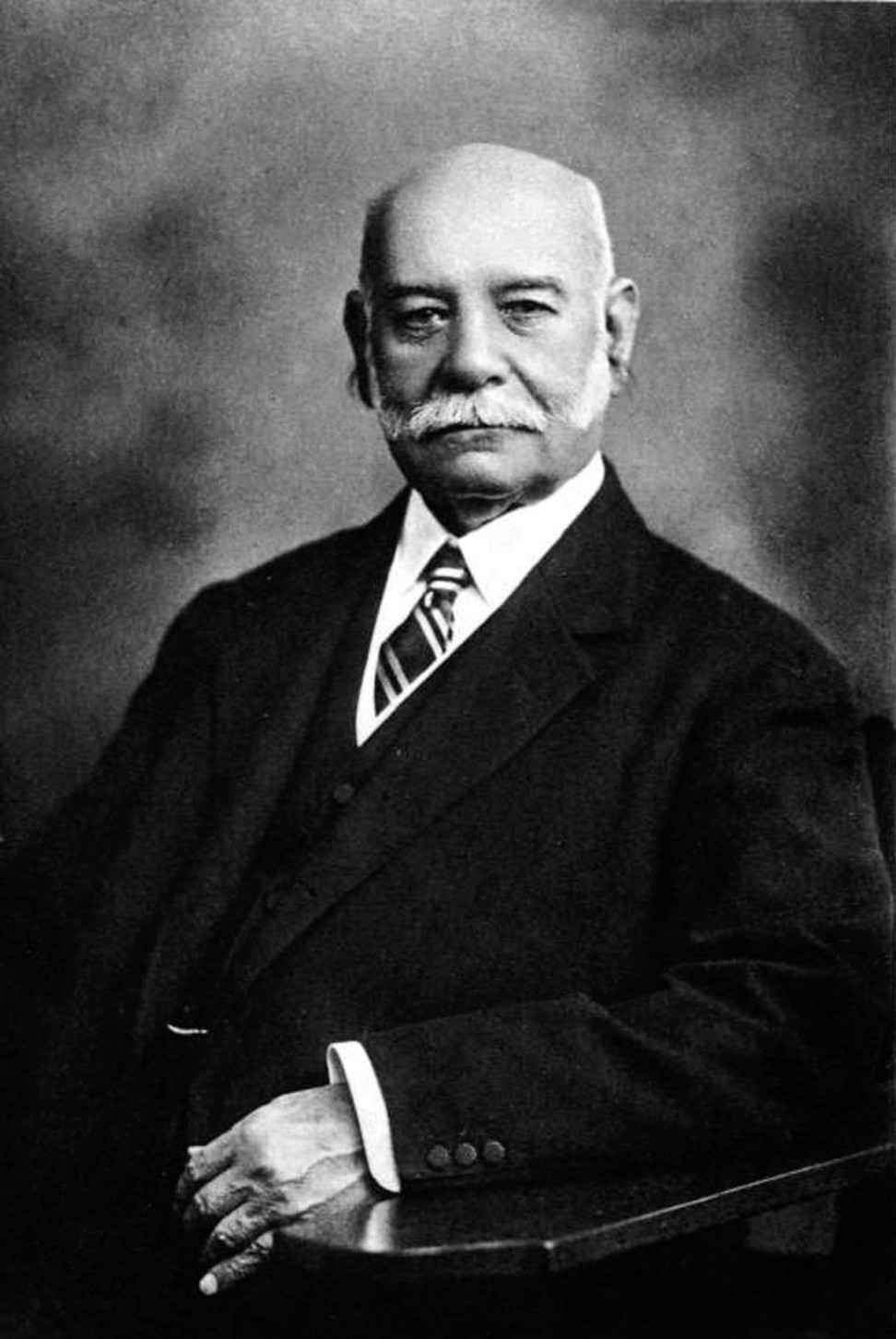
The reclamation project was approved in 1889, and Chater quickly set up the Hong Kong Land Investment & Agency – today known as Hongkong Land – to develop the new land.
The growth of Chater’s influence kept pace with the construction. In 1896, Chater was appointed to the governor’s Executive Council, and the following year he was appointed head of the Diamond Jubilee Committee, which was in charge of celebrations for the 60th anniversary of Queen Victoria’s reign in 1897.
To honour the monarch, the committee commissioned a statue of the queen, sheltered by a grandiose stone canopy in the form of an imperial crown. It was installed in a prime waterfront spot on the newly reclaimed land, next to the Queen’s Building and Prince’s Building – both developed by Chater’s company – and in front of the elegant new headquarters of the Hong Kong and Shanghai Bank, which was by then the most important financial institution in the colony. City Hall, built in 1869, stood at the southeast corner of the square.
Those institutions were soon joined by the Supreme Court, which was completed in 1912. Seven decades after it was colonised by the British, Hong Kong finally had a physical seat of power – a ceremonial square that reflected the gleam of empire. And Paul Chater was able to watch over everything from Marble Hall, his airy Mid-Levels mansion, which had a prime view of Central.
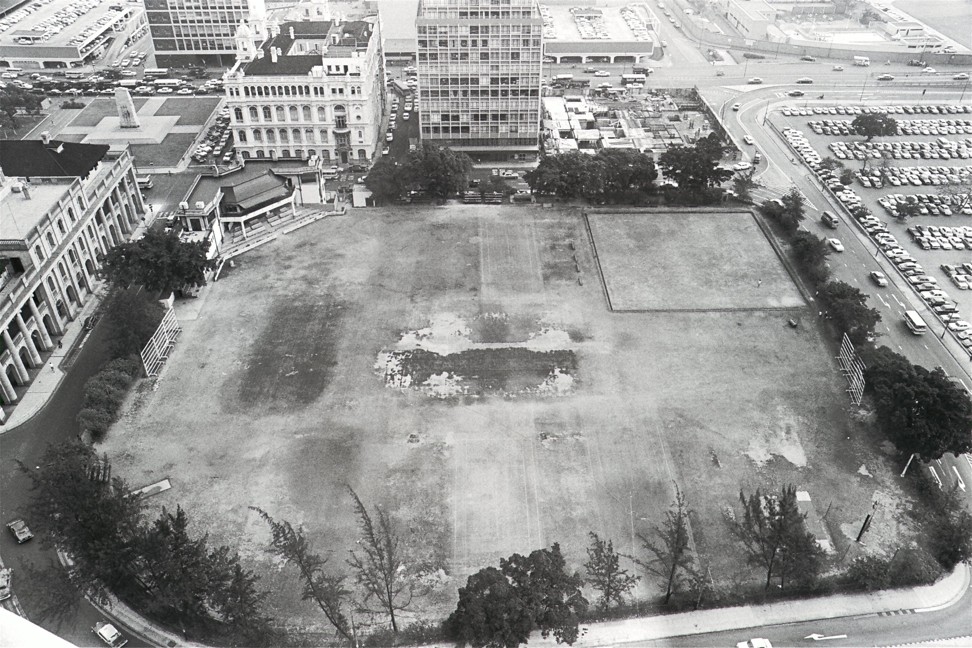
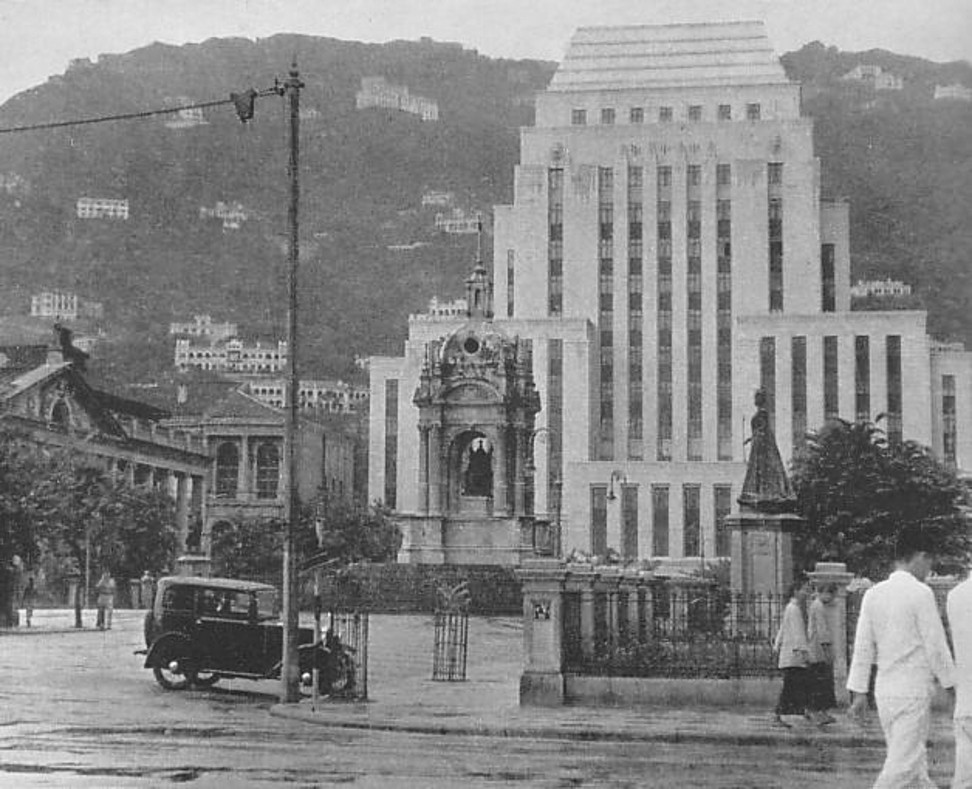
The number of statues and monuments in Statue Square continued to proliferate. By the end of the 1930s, Queen Victoria, Queen Alexandra and the Princess of Wales had been joined by King George V, Queen Mary, King Edward VII, Sir Henry May (who served as governor of Hong Kong from 1912 to 1918) and Sir Thomas Jackson, a particularly influential manager of HSBC. Chater was honoured by Chater Road, on which sat the Cenotaph, built in 1923 to commemorate those who fell in the Great War.
The Japanese military scrapped all but one of the statues after it invaded Hong Kong in 1941. The only survivor was Jackson. Perhaps the Japanese knew who really called the shots in Hong Kong. In 1965, Jackson’s statue was given a new plinth as the square was thoroughly renovated.
When it was first established, Statue Square was less of a square than a pocket of open space traversed by Wadley Street, which connected the HSBC headquarters with Queen’s Pier on the waterfront.

The redesign was meant to foster a new link between Central and Edinburgh Place, which opened in 1956 as a new civic centre for Hong Kong, flanked by a modernist City Hall, Star Ferry pier and Queen’s Pier.
Perhaps as a reflection of the more democratic ethos of the post-war era, the new square was less ceremonial and more of a gathering place, with sheltered seating areas and fountains filled with abstract artworks.
In the 1980s, Filipino domestic workers began congregating in the square every Sunday, a tradition that continues today with weekly picnics, fashion shows and markets. It also became a magnet for political rallies when the Legislative Council made its home in the old Supreme Court building in 1985.
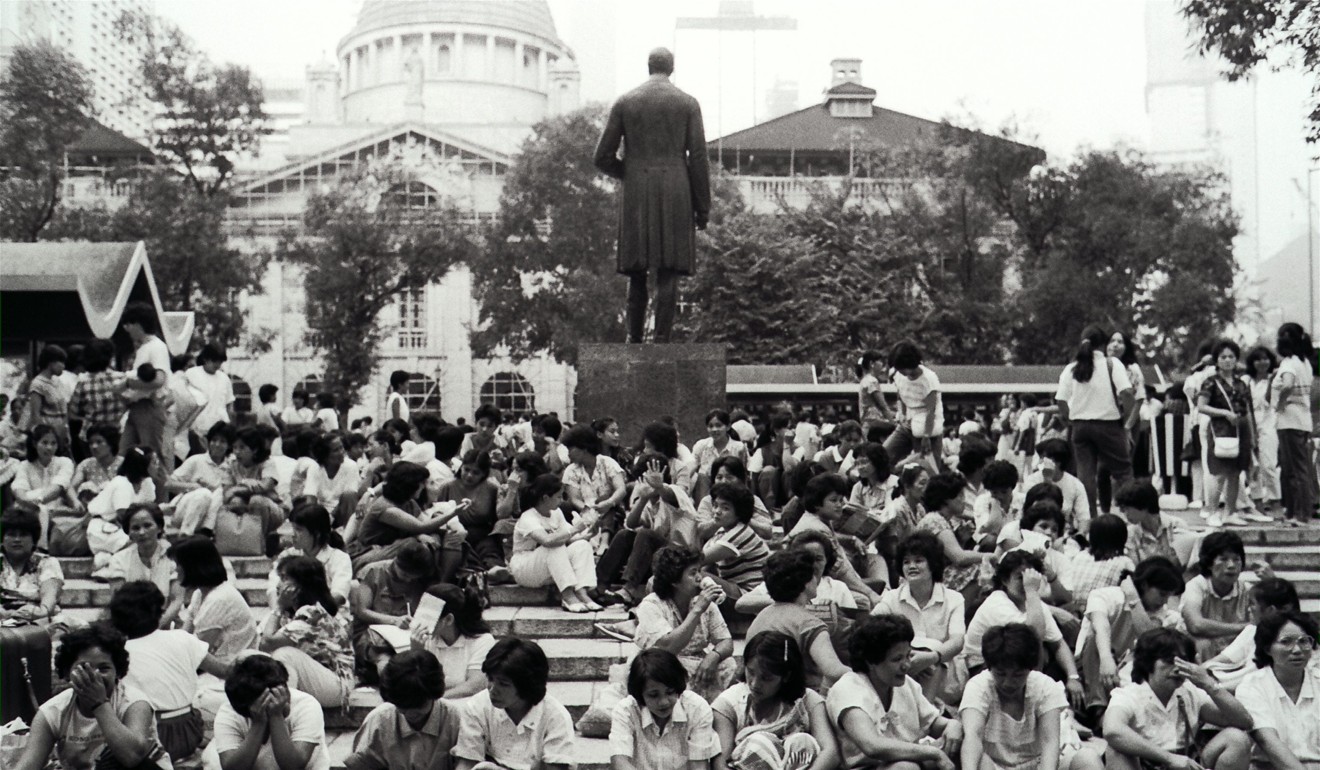
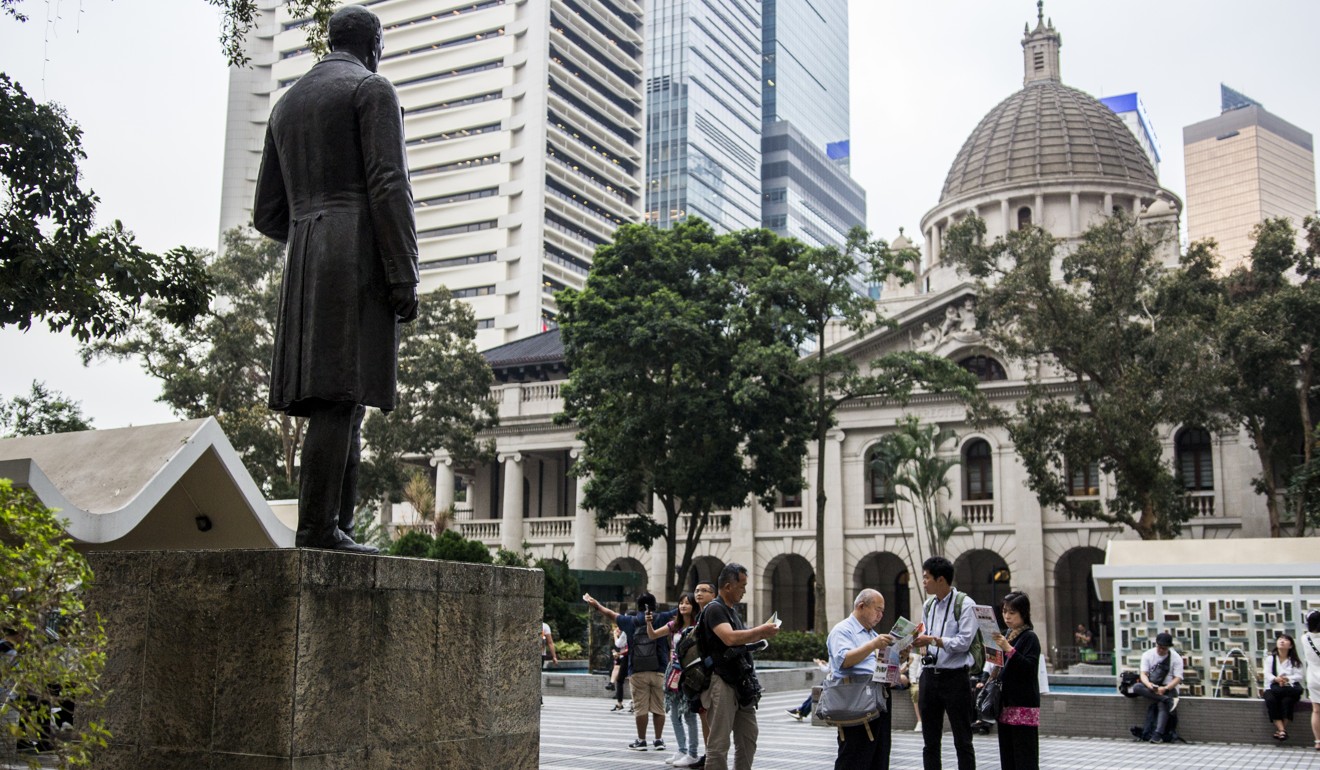
Legco departed for the government’s new Tamar headquarters in 2011, around the same time that Statue Square was permanently severed from the waterfront by yet another round of reclamation. And yet, although the city’s centre of power has grown up and away from the square, it still feels important – a spot where so many threads of Hong Kong’s history come together.

